February 1, 2017
I started cooking in the early 1970’s when most cooking authorities were trying to convince us that vegetables needed to be crunchy to be good. No doubt, many vegetables served on American tables were gray, mushy and lifeless but not all vegetables, and certainly not all vegetable dishes, are meant to be toothy, let along crunchy.
I was having a conversation with friends over dinner in Palm Springs just last week about cooking . They asked me when I started cooking and when I told them, the muscles on their faces froze ever so briefly which made me do a quick calculation. I started cooking before they were born! Which means, basically, I’ve seen a lot of food fads and crazes. I try to avoid them.
I embrace new ingredients or, as is more often the case with “new” ingredients, old ingredients that are finally finding their way to our markets and are, therefore, new to us. When I think about the ingredients that are available to me now compared to when I started cooking, the difference is staggering.
Honestly, though, the core of my cooking hasn’t changed. I still focus on traditional foods. I try to find dishes that have stood the test of time; dishes that have been made for a generation or two, if not a century or two.
Sometimes, though, food crazes get us to think about how we cook and cause us to make changes for the better. Take crunchy vegetables. I think American vegetable cookery started getting better when “everyone” was hyping crunchy vegetables. It got us to think about what was on our plates and whether the essence of a particular vegetable dish was best presented with soft vegetables, crunchy vegetables, or something in between.
Not every vegetable dish is better with crunchy vegetables. That took me a while to learn as a novice cook in the 1970s when I tried to convert every vegetable recipe to one with toothy vegetables. They were not all successful. Not only does texture change with more cooking, flavor does too. Sometimes those flavor changes “make” the dish as much as the textural change.
This recipe is a good example, though it is not one that I was making in the 70’s. The essence of the dish is slow-cooked cauliflower and onions that become sweet as the natural sugars caramelize and the cauliflower softens.
I learned to make this from my mother-in-law, who is from Friuli. Friuli is northeast of Venice, adjacent to Slovenia. The food definitely shows the influence of Eastern and Central Europe but more on that in upcoming posts.
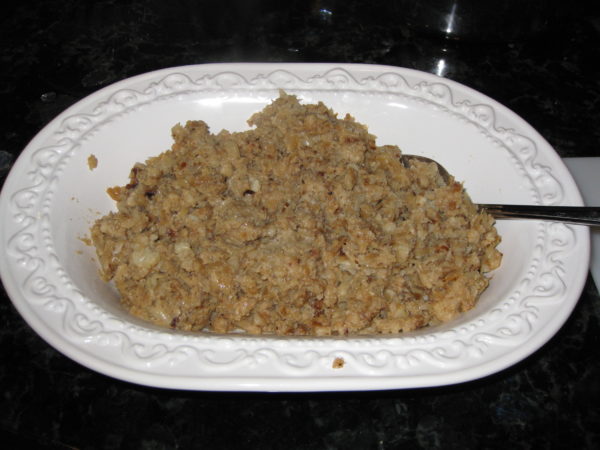
| Prep Time | 20 minutes |
| Cook Time | 2 hours |
| Servings |
people
|
- 1 head cauliflower
- 1 large onion diced
- 2 cloves garlic minced (optional)
- 1/4 cup extra virgin olive oil or butter
- White wine and/or water as needed
- salt to taste
- Freshly ground black pepper to taste
Ingredients
|

|
- Bring a large pot of heavily salted water to a boil.
- Meanwhile, cut off the base of stem of the cauliflower and remove the green leaves.
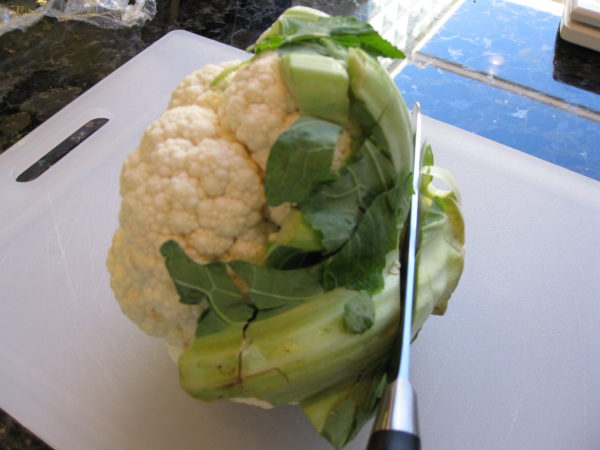
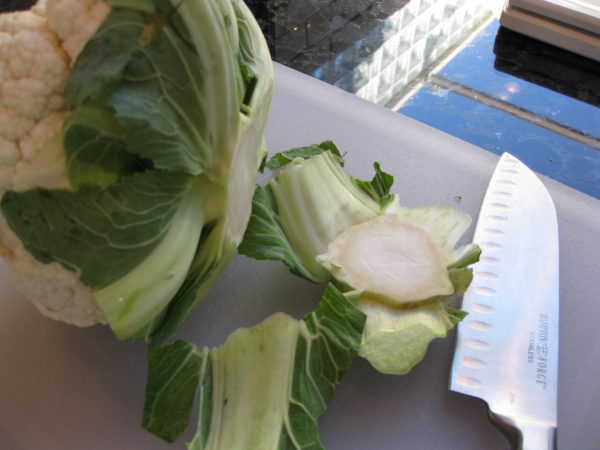
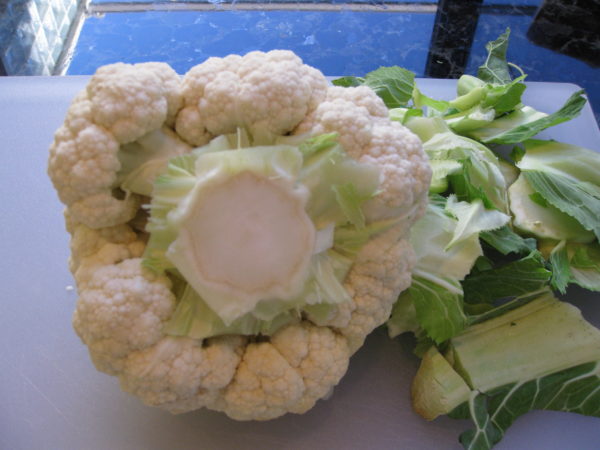
- Add the cauliflower to the boiling water and cook, uncovered, until it shows just a little resistance when pierced with the point of a knife. This will take between 6 and 10 minutes depending on the cauliflower and how far above sea level you are. When in doubt, opt for less cooking rather than more as you can compensate during the slow-cooking phase.
- Using a large slotted spoon, remove the cauliflower. Place it in a colander to drain.
- Meanwhile, in a large sauté pan, sauté the diced onion in olive oil (or butter) over medium-high heat. Season with salt. The salt will draw out moisture from the onion. As the moisture evaporates you will need to reduce the heat to medium-low to prevent the onion from browning.
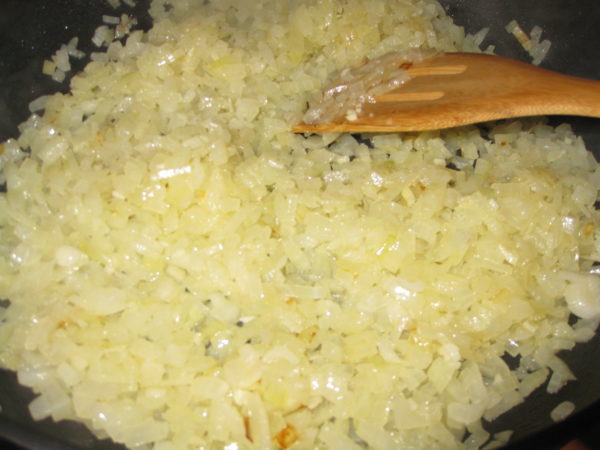
- When the liquid has evaporated and the onion is beginning to soften, add the minced garlic, if you are using it. Continue to cook over low heat until the onion turns golden but not brown. This can easily take another 20-30 minutes.
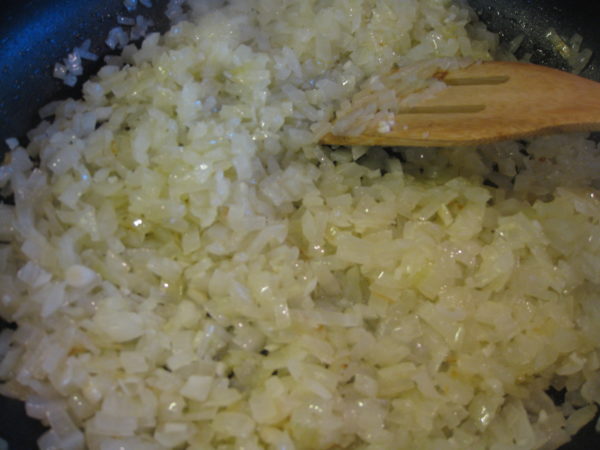
- As the onion is cooking, cut the cooked cauliflower into florets.
- When the onion is golden, add the cauliflower. Season with salt and freshly ground black pepper. Cover and cook, stirring occasionally.
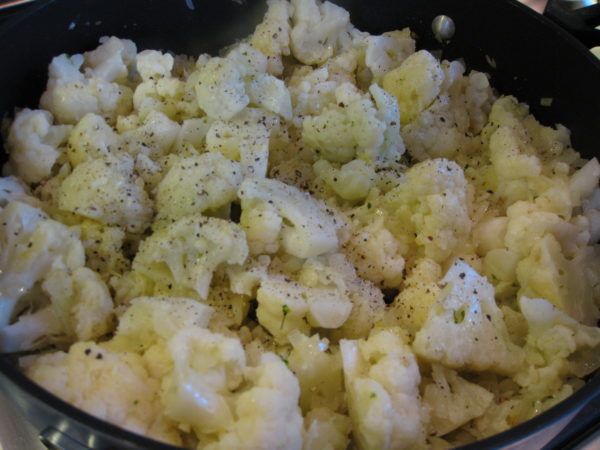
- Add a little wine or water from time to time, as needed, to keep the cauliflower from sticking. There really shouldn’t be any appreciable liquid in the bottom of the pan. Should that happen, uncover the pan slightly till the liquid evaporates.
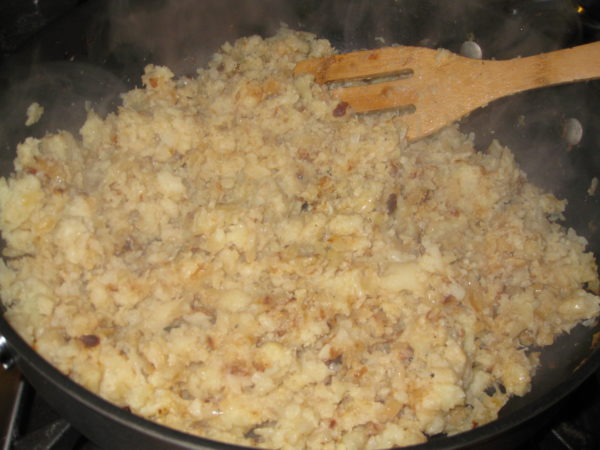
- The florets will break apart as the cauliflower cooks. If you want small pieces, press down on the cauliflower from time to time while cooking. As the cauliflower cooks, taste a few times to adjust salt and pepper.

- The cauliflower will slowly darken through caramelization. How far you want to go is up to you. I went fairly far when cooking the cauliflower in these pictures. The cauliflower gets softer the longer it cooks but it also caramelizes more. Figure out the balance of texture and taste you like best.

Copyright © 2017 by VillaSentieri.com. All rights reserved.

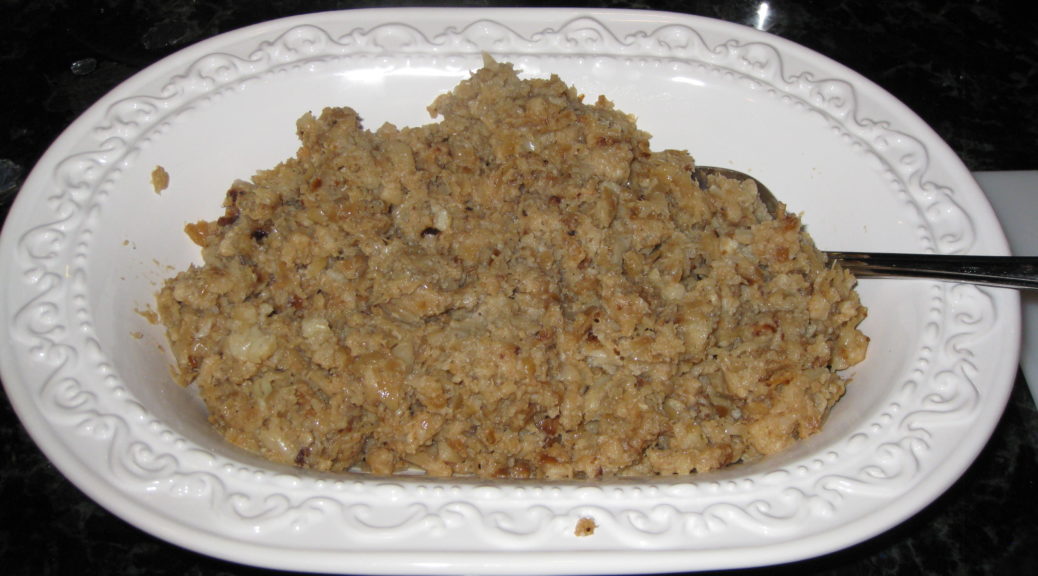
Looks delious, I will have to try if. I make roast cauliflower, this will be something different.
Let me know how it turns out.
this looks delicious! I love cauliflower!
Thanks!
I hope you enjoy it.
Perfect timing! Was looking for a “white” veg, non-potato for Wednesday evening dinner. This is it!